Kanchipuram, Tamil Nadu, is without a doubt the greatest place to buy Kanchipuram sarees.
A trip to the city of Kanchipuram in Tamil Nadu is definitely in order if you dream of visiting India and experiencing a unique blend of culture, history, and traditional style.
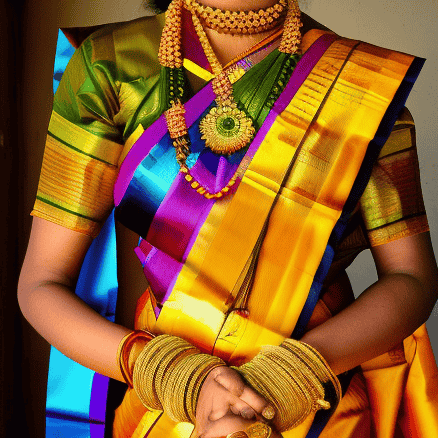
For centuries, this ancient walled city has been renowned for its exquisite handwoven silk sarees. Each six-yard spread outdazzle with an intricacy of pattern and colours guaranteed to take your breath away!
Whether it’s handed down through generations as a keepsake or donned at weddings and special occasions, Kanchipuram sarees are truly something magical that links us all together. Explore the old streets of Kanchipuram today – get ready to encounter one hundred temples and timelessly beautiful weaves!
The queen of Indian silks is Kanchivaram or Kanchipuram
The queen of Indian silks is Kanchivaram. Exquisite texture, delicate feel, quality, craftsmanship, exceptional weaving technique, and pleasing colour combinations distinguish it.
In a single saree, the entire culture of South India may be seen. It has shown its usefulness all over the globe since its origin in a little Tamilnadu town. Indian women’s wardrobes aren’t complete without at least one kanchi saree. From generation to generation, it has retained its prominence in the eyes of clients. Wearing a Kanchipuram saree at festivals and rituals is a mark of auspiciousness, even if it has lost its classic beauty.
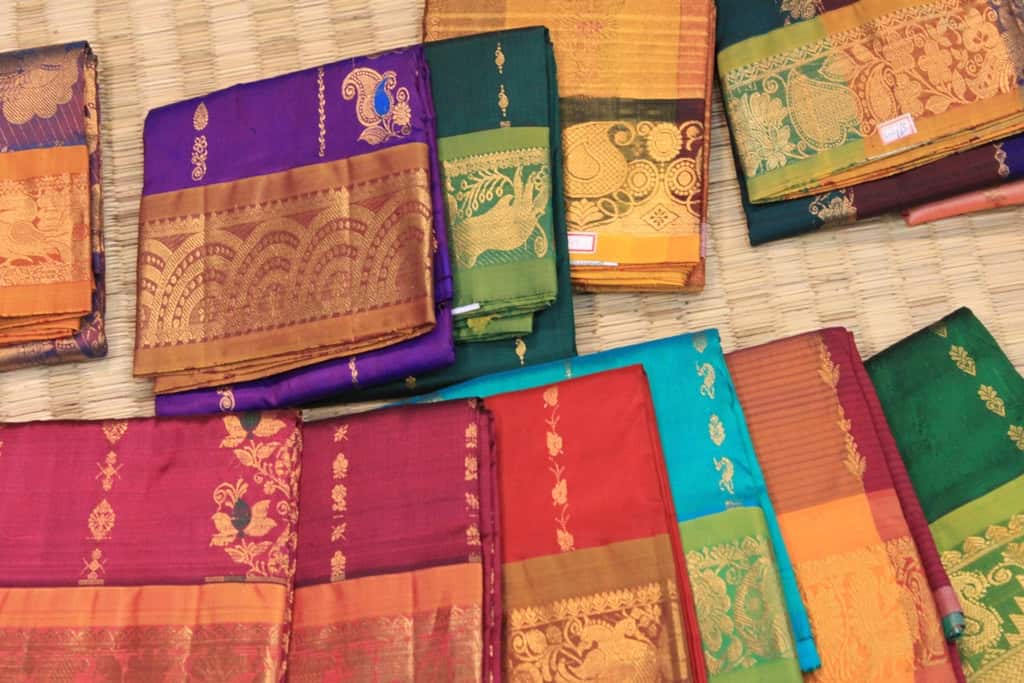
Silk sarees are a traditional style statement in India, with six yards of beauty and grace. Every state has its own silk saree with its own weaving and style, and Tamil Nadu’s is the Kanchipuram saree.
For its traditional style, sumptuous feel, and history that goes with each pattern, this remarkable saree finds a valued position in closets across the country. Weavers in Kanchipuram, the city of a hundred temples, skillfully weave sarees in brilliant colours with designs and a zari (border) made of high-quality gold or silk thread to be donned at weddings and other special occasions.
This style of saree has a long history
The famed Kanjeevaram or Kanchipuram saree weaving dates back 400 years and is based in the little town of Kanchipuram (Tamil Nadu). The art truly took off during the time of Krishna Devaraya (of the Vijayanagara Empire). The Devangas and Saligars, two important weaving groups in Andhra Pradesh, came to Kanchipuram. They wove silk sarees with pictures of texts and sculptures seen on temples across the town, demonstrating their great weaving talents.
Sarees are also mentioned in Indian mythology. Kanchipuram’s weavers are claimed to be the heirs of God’s master weaver. The sarees made here are renowned for all ceremonies performed not only by Tamils but also by people from other states. Kanchipuram offers a wide selection of silk sarees at different prices owing to the finesse and work involved. Due to the obviously large amount of silk saris made here each year, it is known as the “Silk Capital.”
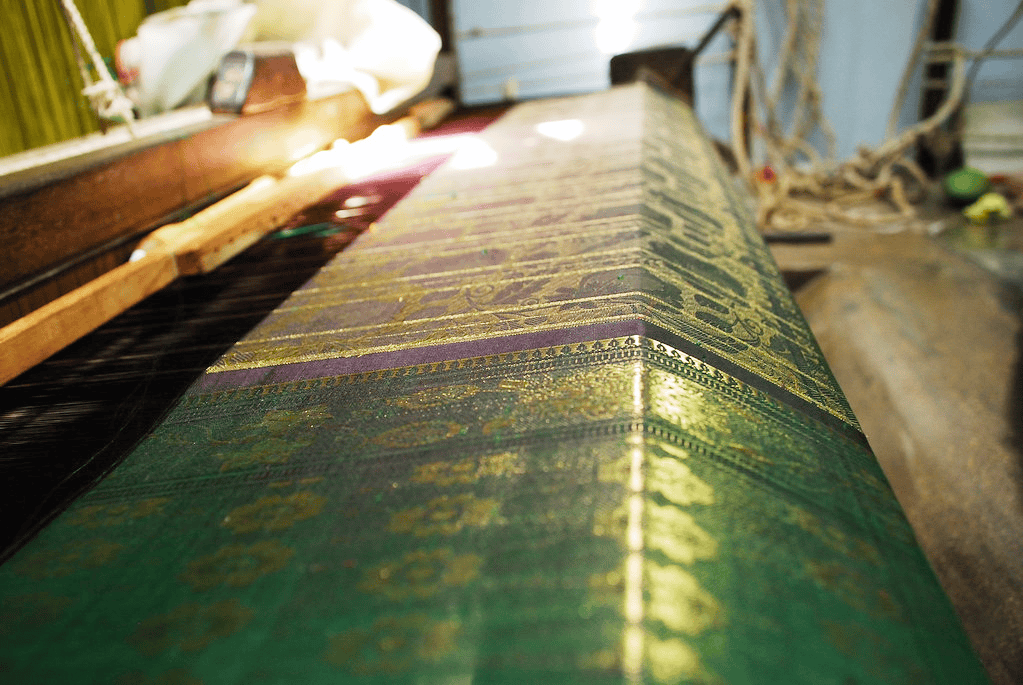
How this stunning silk saree is woven and designed
Pure mulberry silk thread is used to weave the saris. Kanchipuram saris are made with fine mulberry silk and Zari, both of which are imported from South India. Three shuttles are needed to weave a Kanchipuram sari. Whilst the weaver is working on the right shuttle, his assistant is working on the left shuttle.
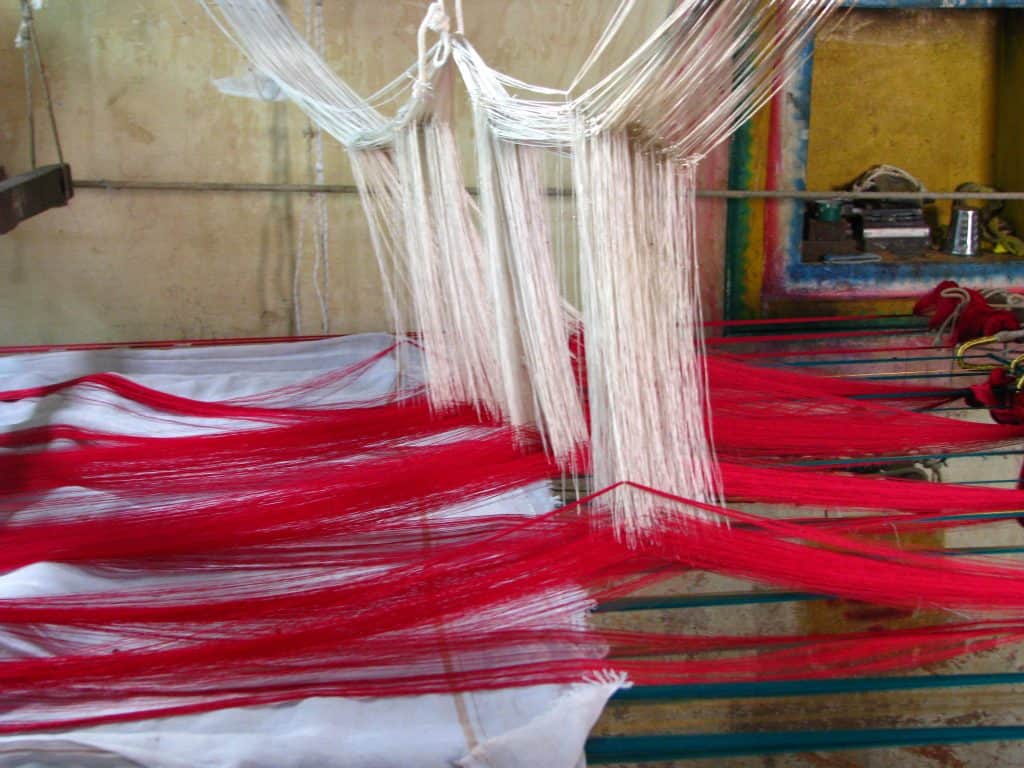
The border is frequently a distinct colour and pattern from the body. If the mundhi (the sari’s hanging end) needs to be woven in a different colour, it is first woven separately and then gently connected to the Sari. A zigzag line generally marks the point where the body joins the mundhi.
The body and border of an authentic Kanchipuram Silk Sari are woven separately and then fused together. The warp framework used to weave this cloth contains around 60 holes, with 240 warp threads and 250 to 3000 weft threads, giving it a robust feel. The pallu, border, and core of the saree are typically woven separately and then joined with great care and accuracy.

As the colour and patterns of the body and the pallu are so dissimilar, weavers weave them separately and then connect them together. A zigzag design (known as the pitni) may be seen where the body joins the pallu. It’s also extremely typical to weave the saree’s border separately before joining the three together. The connecting of the three (known as korvai) is performed with such perfection that the borders will not separate even if the saree splits.
The zari is also exceptionally highly durable, as it is constructed of three silk threads interwoven with a silver wire. This, meanwhile, can increase the weight of a Kanjeevaram saree, making it as thick as two kilos.
Kanchipuram silk sarees have included temple figures and mythical legends in their designs since their origin. The saree’s border has temple, palace, and general painting patterns, while the body features pyramidal temple patterns, checks, stripes, and flowery patterns. Over time, more symbolic patterns such as fruits, creatures, birds, the sun and moon, and even mythological stories have supplanted conventional and popular stripes or solid gold dot designs.
You can get a range of colours – all the way from a pink Kanchipuram silk saree to peacock blue Kanchipuram silk saree to maroon Kanchipuram silk saree. You only have to ask the shop keeper the colour that you are looking for or as likely he will ask you – ” Do you want this magenta Kanchipuram silk saree or navy blue Kanchipuram silk saree?”
Famed GI tag for the Kanchipuram saree
Kanchipuram sarees have been brought under the Geographical Indication Act to highlight the ancient Indian heritage. Kancheepuram sarees are India’s most enticing and magnificent sarees, originating in the Tamilnadu region of Kancheepuram. The silk board of India only awards the silk mark to pure Kanchipuram sarees, and this label on the saree is proof of its authenticity.

Kanchipuram sarees were granted a Geographical Indication (GI) by the Indian government in 2006, giving them a unique identity and acknowledgement in India and across the world. This (GI) marking has proven to be a milestone in the development of the Kanchipuram brand. It shall maintain standard weight, quality, and Jari mark as specified in the act’s criteria, according to this (GI). With the introduction of the Kanchipuram saree, sales have increased in many countries (GI).
Traditional Kanchipuram sarees turn to modern style statements
Real, one-of-a-kind, and hand-picked handloom silk sarees from all across South India enhance a woman’s elegance and flair. Consumer preferences are shifting, particularly from classic handlooms to beautiful light sarees, signalling the need for the sector to restructure its production strategies to meet changing demand trends. Power looms have now surpassed handlooms in terms of ease and speed of production. Both demand and supply have risen as a result of the use of ICT (Information and Communication Technology) in the manufacturing and marketing processes.
The use of Computer-Aided Design (CAD) / Computer Aided Motif (CAM) has led to the development of new contemporary border and pallu designs. Kanchipuram sarees have seen a makeover as well. Traditional Kancheepuram sarees are embellished with embroidery and crystals.
Because lightweight Kanchi sarees are in high demand, weavers use cotton and kora while making these sarees and you can ask for and get your choice in light Kanchipuram tissue silk saree. In today’s society, buyers want less expensive items with light colours and basic patterns. Weavers are making sarees with single corner borders to reduce the high cost of sarees and make them accessible to all types of clients.
Where to buy?
Kanchipuram, Tamil Nadu, is without a doubt the greatest place to buy Kanchipuram sarees.
Price range
Kanchipuram sarees start at roughly 2.5k and may reach up to 2 to 3 lakh depending on the material and pattern.
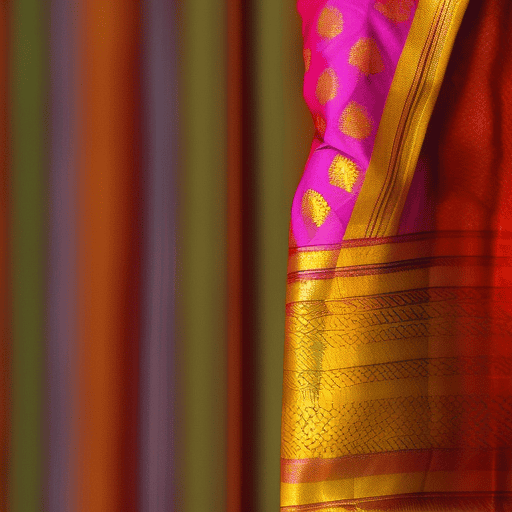
How to know the authenticity when you buy?
Precisely 21 cooperative silk organisations and ten individual weavers are permitted to sell genuine Kanchipuram silk sarees in the city that bears their name. Make sure to look for the GI tag on every real Kanchipuram silk saree.
Quick notes about Kanchipuram silk sarees of Tamil Nadu
- Kanchipuram silk sarees are known to be the best quality silk sarees found in India. The intricate designs and patterns along with bright colors make them a popular choice for weddings and special occasions.
- The traditional silk weaving techniques used to create these beautiful sarees have been passed down from generation to generation. This rich cultural legacy is maintained even today, with skilled artisans using hand-operated looms to make the sarees.
- The town of Kanchipuram in Tamil Nadu has a long history of silk weaving, which dates back to the 5th century BC. Over time, the tradition and skills involved have been perfected and the sarees have become known for their high quality and intricate designs.
- The sarees are usually made of Mulberry silk, which is produced by silkworms fed on special diets in order to produce the finest possible quality of yarn. The combination of this fine thread with complex weaving techniques makes Kanchipuram silks some of the most expensive sarees in the world.
- In addition to their traditional designs and motifs, many modern Kanchipuram silks also feature more contemporary patterns and colors. This has made them increasingly popular among younger women looking for a stylish yet timeless look.
- The complex and lengthy process of weaving a single Kanchipuram silk saree can take up to three months and involve many skilled artisans. This makes them a truly unique and special item that is treasured by its owners for years.
- The intricate designs of Kanchipuram silks often feature intricate zari work which involves threading gold, silver or even diamond-dusted threads into the fabric. This adds an extra layer of detail and luxury to the sarees, making them highly sought after.
- Kanchipuram silks are often gifted during special occasions such as weddings and anniversaries, as a way of showing respect and appreciation for one another. They are also a great way to show your love for traditional Indian culture.
- During the 19th century, Kanchipuram silks were exported to many countries around the world, including Britain and France. This helped spread the tradition of these beautiful sarees across the globe, making them even more popular in modern times.
- Kanchipuram silks are a symbol of Indian culture and heritage, and wearing them is an honor that is cherished by many people from all over the world. A true testament to this is the fact that these sarees continue to be popularly worn even today!
Read more: Latest



